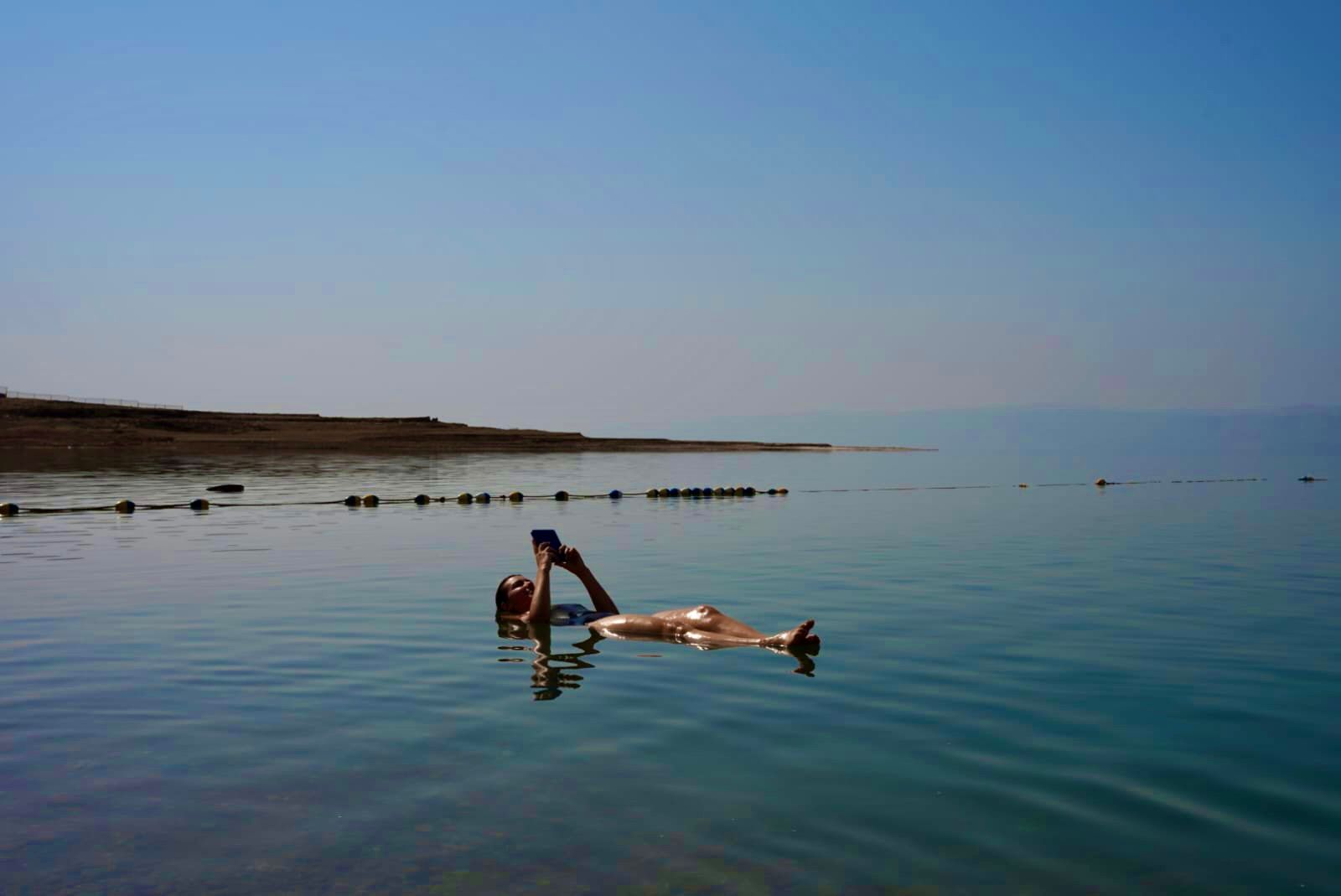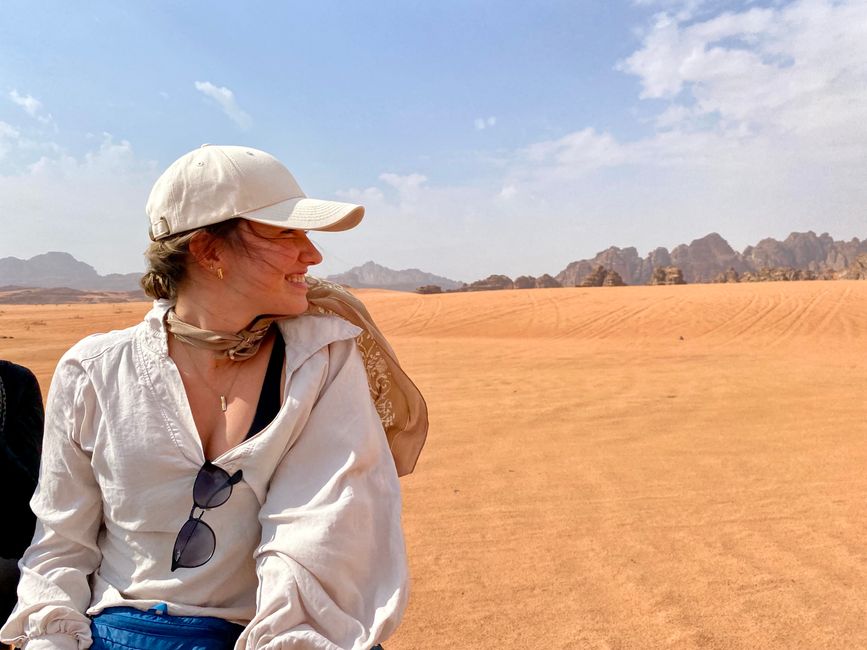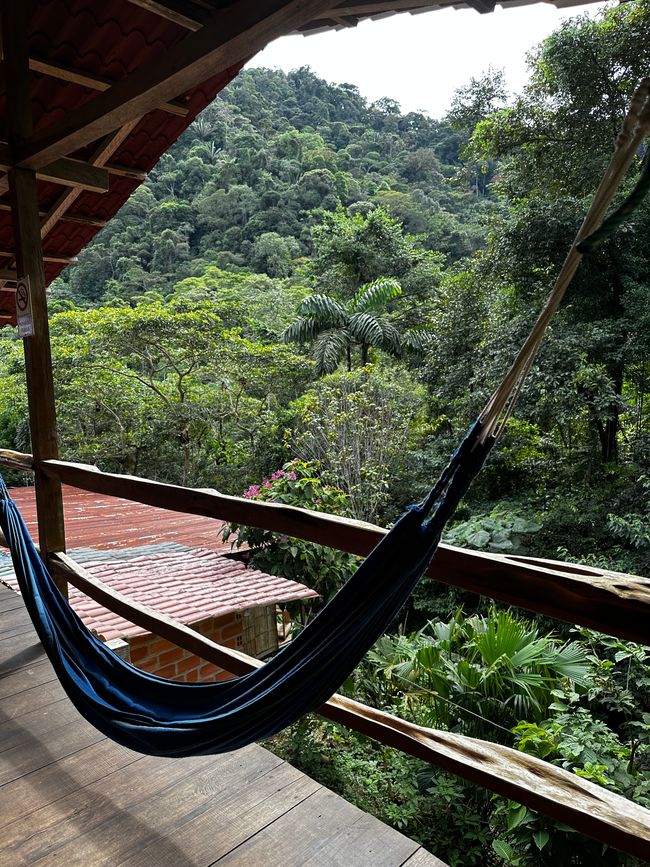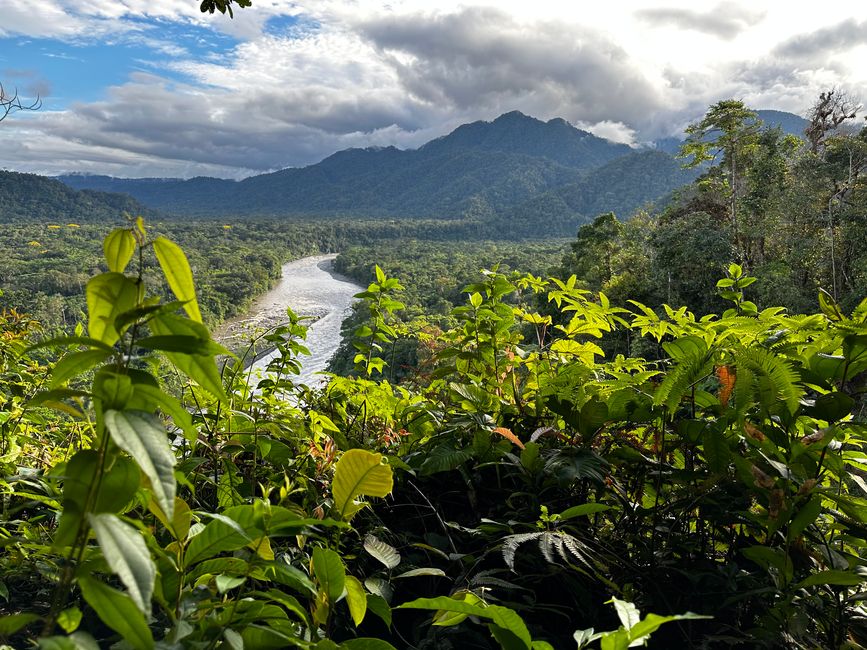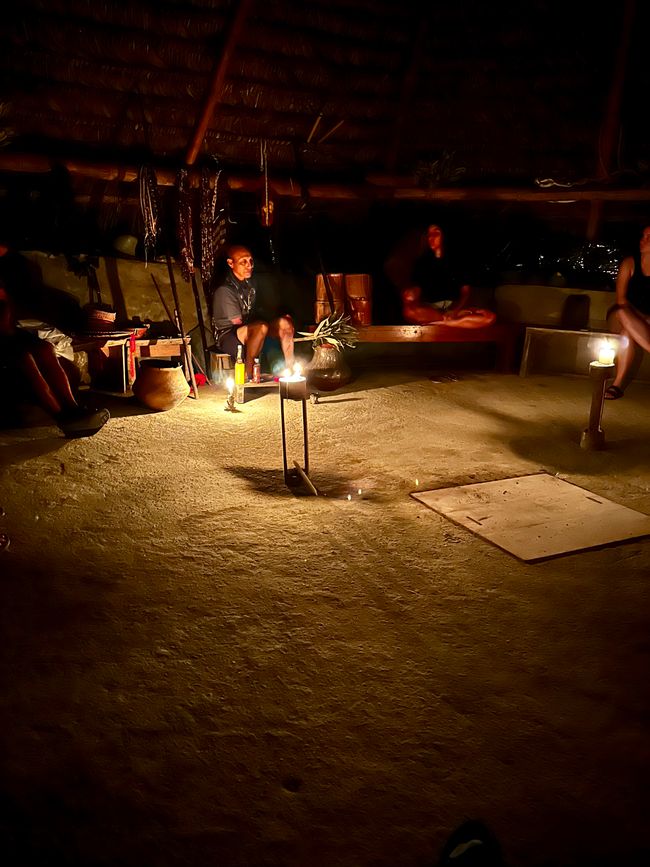Spirit of the Jungle
Published: 24.04.2024
G Adventures Time! Breakfast at 7:30 a.m., departure at 8 a.m. "sharp". When loading the bus, I am very proud to note that I have one of the least luggage; so either I was pretty good at packing or I forgot something essential - we will see. After a 40-minute drive, we stop at a rest stop to change to a public bus, which picks us up about 20 minutes later and begins the four-hour drive into the jungle to Tena. In summary, the view was one thing: green. At first, near the city, there are still regular forests, but the more the windows fog up and the further we drive into the jungle, the more we see dense rainforest scenarios we know from documentaries. Partially covered with clouds and fog, the Amazon behind the window seems like a large and untouched mystery. It feels surreal to know that I will be spending the next few days and nights here while playing music from Spotify on my headphones on my smartphone.
Passengers keep getting on and off until we finally reach Tena. While we wait for the pick-up trucks that will take us deeper into the jungle, we have a few minutes to stroll through the market and buy fresh strawberries and bananas. Then we load our backpacks onto the pick-up trucks and start the last 30-minute drive to Pimpilala, where we will spend the next two nights.
We arrive at lunchtime and eat lunch together and are greeted by the Kichua family, who let us use their home as a camp. We take our backpacks to our double rooms, where the beds are already equipped with mosquito nets. The rooms do have doors, but instead of windows we "only" have more mosquito nets, the wooden walls are about 4m high and between the walls, and we share a roof with 6 other rooms. One side of the house looks directly into the rainforest and on a large terrace there are numerous hammocks hanging, in which we will certainly spend a minute or two.
Now we set off on our first tour of discovery into the jungle. Dress code: shorts, top, high rubber boots (our "wellies" will accompany us for a few more meters) and insect spray. Already on the way along the gravel road into the jungle we stop several times, during which Rolando shows us some plants and explains their uses. We also saw a black wasp about 10cm long, which made us all shudder, and Rolando pulled some termites out of a tree with his machete. Apparently the termites that live on the ground taste a little better than those found in the trees, but you take what you can get, right? "One termite is not one", so we try several and my conclusion is: nutty. I still wouldn't say I'd like termites on my yogurt, but there's nothing wrong with a little protein snack in the jungle in the afternoon. The tour of discovery of flora and fauna continues, but by the end of the walk we are all in awe. We enjoy a phenomenal view over the Rio Jatunyacu and are captivated by the incredible vastness of the rainforest. It is almost unimaginable and fascinating at the same time how many animals, plants and wonders this patch of earth is home to. Before we return to the camp, we make a detour to a small stream from which Rolando collects clay, conjures up face masks for all of us and even decorates us with ferns, flowers and moss. A sentence that we will hear from Rolando many times: I love my job. The next step is to wash off the mask and reapply the insect spray before we devote ourselves to the evening program later.
The family elder welcomes us into his house and tells us many stories about the Kichua culture in Spanish, Alina translates for us. We talk about shamans, the healing culture and the relationship to modern medicine, about ayahuasca, the "spirit of the jungle", Kichua weddings, rituals, tribal rules and dance and music. Writing all of this down here would not be able to summarize how amazing and inspiring the Kichua culture is and what it means to the people here.
At dinner we all exchange impressions of our first day in the jungle before we all apply a fresh layer of insect spray and crawl under our mosquito nets.
Answer
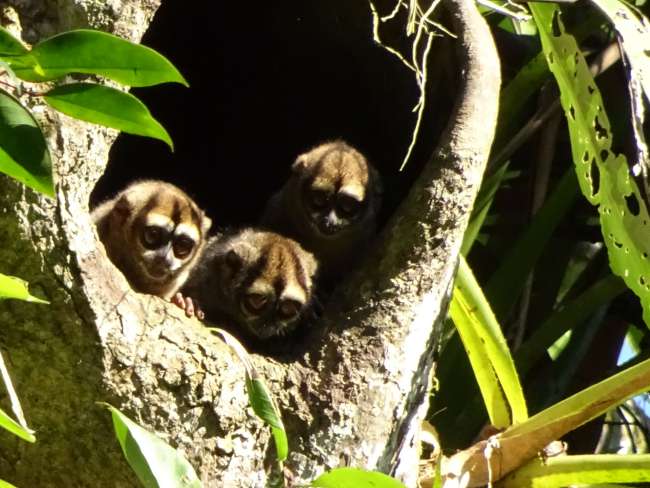
Travel reports Ecuador
